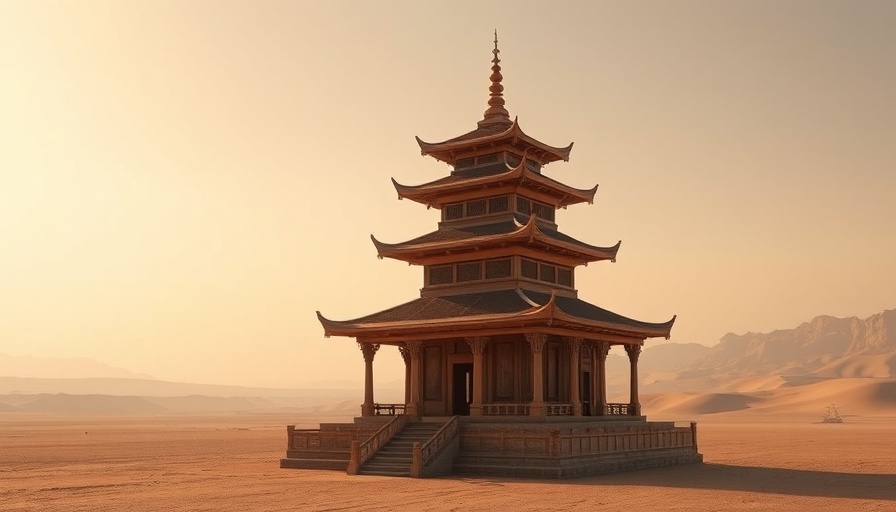
Introducing the Temple of the Deep: A Monumental Creation
The Temple of the Deep, designed by Spanish architect Miguel Arraiz, is set to become a centerpiece of the Burning Man festival in 2025. This visionary structure is not just another installation; it’s a heartfelt homage to communal healing and artistic expression. Drawing inspiration from both the natural landscapes of Black Rock City and Japanese craftsmanship, the temple serves a dual purpose: creating a reflective space while encouraging emotional exploration.
Nature Meets Futurism in Design
The monumental design features a stunning heptagonal dome characterized by its geologic structure and buttresses, depicted as a giant fractured black rock, which resonates with the theme of loss and healing. Arraiz’s vision includes an open-air space within, enhancing airflow while offering shade to participants gathering in the desert sun. This element of functionality is coupled with a striking aesthetic, where the exterior showcases fractures reminiscent of the Japanese kintsugi technique. This traditional art, which repairs broken pottery with gold, not only highlights imperfections but embraces them, mirroring the journey toward wholeness.
The Healing Journey: Emotional Acceptance
Underlining the design philosophy is a focus on radical acceptance—a critical aspect of the human experience, especially during moments of grief. The Temple is envisioned as a nurturing shelter, similar to caves or mountains, where individuals traditionally gathered for reflection and connection. This architectural sanctuary encourages visitors to engage authentically with their emotions without the pressure of swiftly moving through stages of grief.
Community Contributions and Collective Efforts
In a true spirit of participation and collaboration, the construction of the Temple will involve hundreds of volunteers, united under a collective effort. The assembly will take place in California, allowing components to be transported to the festival site in September for final assembly. This process emphasizes community involvement—a hallmark of Burning Man culture.
Balancing Art and Environmental Concerns
While Burning Man has long been celebrated for its leave-no-trace ethos, it faces scrutiny regarding the environmental impact associated with the installation and destruction of artworks. The Temple of the Deep aims to balance artistic expression with ecological responsibility. As Arraiz noted, while celebrating creativity, it’s essential to remain aware of and minimize the environmental footprint of such monumental projects.
A Space for Reflection
The Temple of the Deep is designed as a communal space for reflection, healing, and connection, aligning beautifully with the cultural values of Burning Man. Visitors are invited to share their stories, participate in healing processes, and build deeper connections with one another. The experience is both an opportunity for personal growth and a celebration of community resilience.
Taking part in something like the Temple of the Deep can inspire home and business owners alike, showcasing how communal art can foster connection and emotional healing. Have you considered how your environment influences personal and communal experiences? The Temple reimagines not just physical space but emotional landscapes as well.
 Add Row
Add Row  Add
Add 




Write A Comment